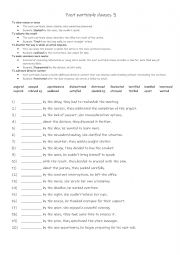
|
A2-B1 Past participle clauses 3
Students complete the gap-fill with the correct word. Answers on page 2.
Level: elementary
Age: 8-100
Type:
Downloads: 114
|
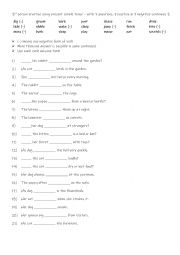
|
3rd person practise using present simple tense � with positive & negative sentences + questions 3
Students familiarise themselves with the 21 verbs. Then they read the sentences to see which question verb is required to complete the gap-fill. Each form is used 7 times! Answers on page 2.
Level: elementary
Age: 8-100
Type:
Downloads: 114
|
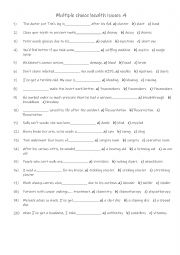
|
A2+ Multiple choice health issues 4
Students read the sentences and choose the correct word out of the given choices. Answers on page 2.
Level: elementary
Age: 11-100
Type:
Downloads: 114
|
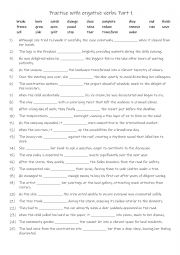
|
B1+-B2 Practise with 25 ergative verbs Part 1
Learning ergative verbs is valuable because it enhances understanding of how English communicates both active and passive meanings without altering verb forms. Ergative verbs make it easier to switch between active and passive-like constructions. For example, "The ice melted" and "They melted the ice" show how an action can be described from differ...
Level: intermediate
Age: 10-100
Type:
Downloads: 113
|
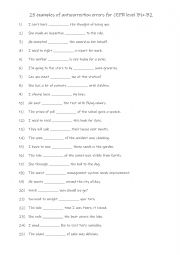
|
Mobile autocorrection errors
25 examples of autocorrection errors for CEFR level B1+-B2.Answers are provided on the following page.
Level: advanced
Age: 15-100
Type:
Downloads: 113
|
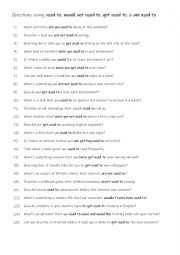
|
Questions using: used to, would, not used to, get used to, & am used to
This worksheet is suitable forstudents at CEFR LEVEL B1+ to C1. Students in small groups or pairs, use the questions as a springboard to talk about adapting to change.
Level: advanced
Age: 12-100
Type:
Downloads: 113
|
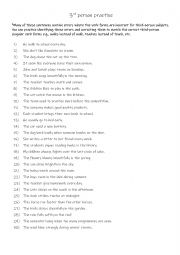
|
3rd person practise B worksheet
Many of these sentences contain errors where the verb forms are incorrect for third-person subjects. Students can practice identifying these errors and correcting them to match the correct third-person singular verb forms e.g., walks instead of walk, teaches instead of teach, etc. This worksheet is suitable for A1-A2 levels. Answers on page 2
Level: elementary
Age: 8-100
Type:
Downloads: 113
|
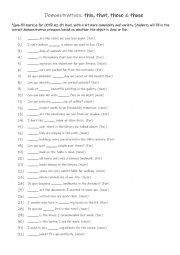
|
A2-B1 Demonstratives this, that, these & those
These sentences should provide A2-B1 level students with practise in using demonstrative pronouns in a variety of contexts, enhancing their understanding of distance and proximity. Answers on page 2.
Level: intermediate
Age: 10-100
Type:
Downloads: 113
|
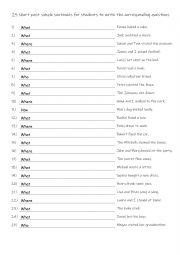
|
A1 25 short past simple sentences for students to write the corresponding questions
Students read the answer and write a suitable question that would lead to the answer, they use the key question word in bold. This worksheet is suitable for A1 level. Answers on page 2
Level: elementary
Age: 9-100
Type:
Downloads: 113
|
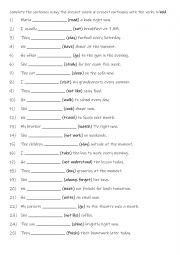
|
Present simple or Present continuous
Students read the sentence to see which tense is required, then they complete the gap-fill by using either the present simple tense or present continuous using the given verb in bold. This worksheet is suitable for A1+-A2 students. Answers on page 2
Level: elementary
Age: 8-100
Type:
Downloads: 113
|












